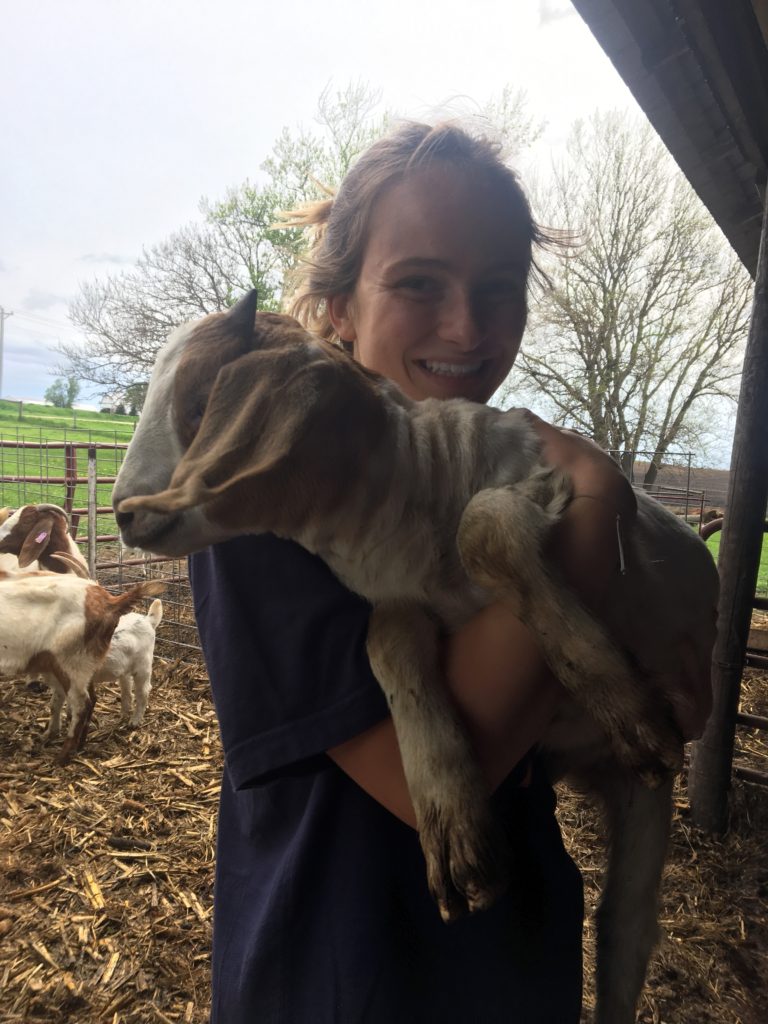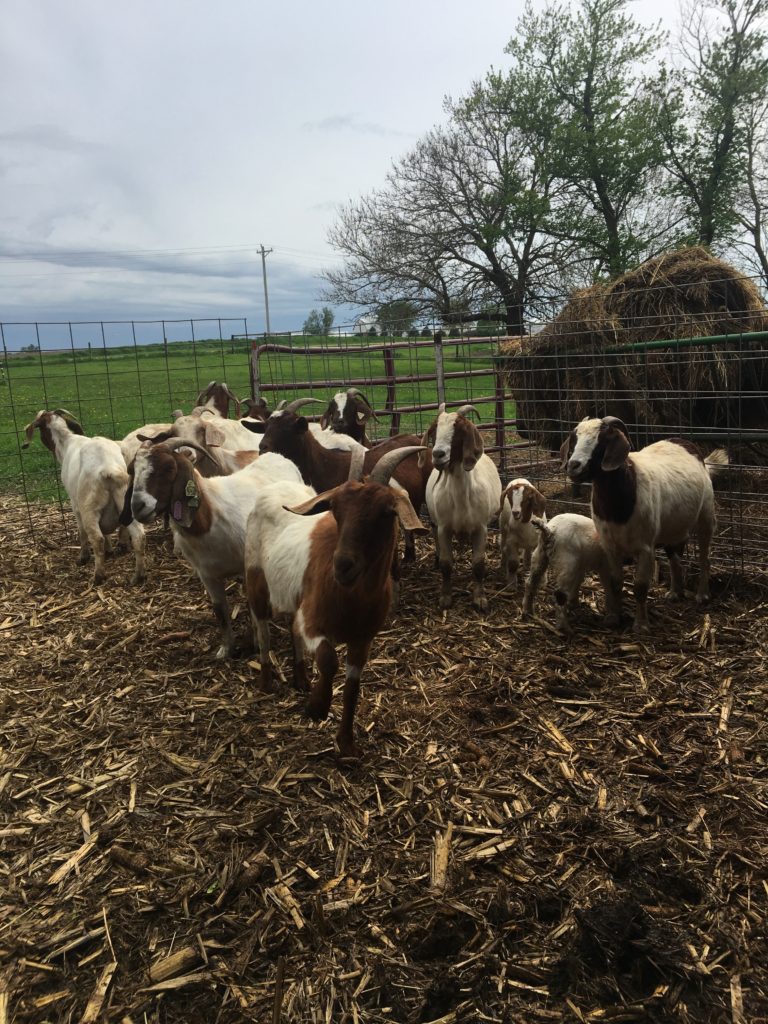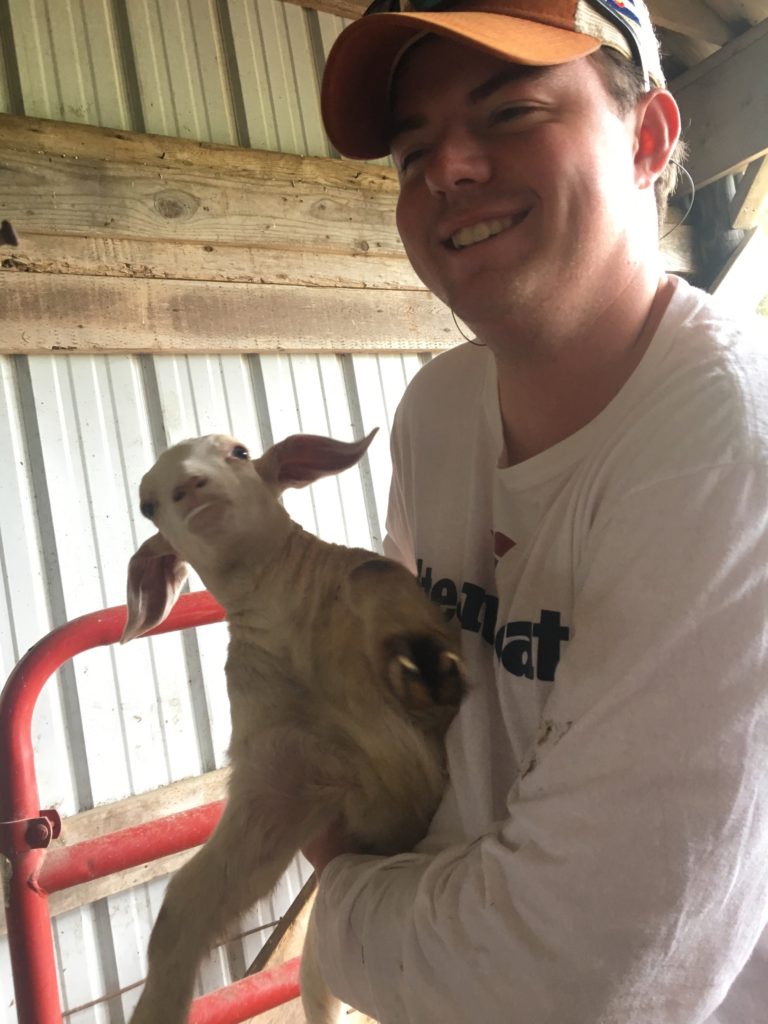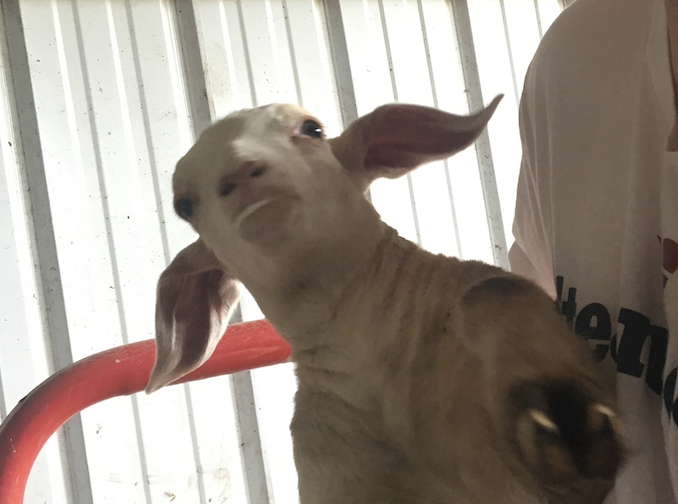Today, was a little lower key than previous days on the farm. We began at 8:15 am, which allowed for some extra sleep. There was down time that allowed us to catch our breath and reflect on all of the new knowledge that we have gained since our arrival.
After breakfast, we traveled back towards Kevin Butt’s farm to learn about crop insurance (not State Farm) with Mitch and Renae. Mitch and Renae have their own insurance agency, in which they actually provide HN’s family with various crop insurances. We learned about the different types of services that can be provided from either government or private insurance. A popular type of insurance offered by private companies is hail insurance. In Iowa they call hail the “white combine,” meaning that it seems to completely remove the crop from the ground. This really emphasized to the group just how much of a gamble farming can be, in what is considered some of the best areas to raise corn and beans in the United States. The variability causes a lot of stress that the insurance helps to relieve.
Next, we headed off to Heath Stolee’s Nutty Farmer Chestnuts operation. Heath, an Iraq War veteran, has decided to go against the grain (pun credits to HN) and plant chestnut trees on his farm land. He has also recently undertook a project to restore a wetlands on his land through the Conservation Environmental Easement Program (CREP). Stolee also has a significant portions of his land in the Conservation Reserve Program (CRP). In Heath’s CRP land, he has planted wildflowers between rows of chestnut trees to promote wildlife and prevent runoff. I really enjoyed learning about his practices and the successes and troubles he has had with it. I think that having another job has allowed him to try new things with less risk as other farmers that make their entire livelihood from their crops. He did mention that he has had some trouble finding available insurance for his trees that adequately cover the risk. The policy only covers a tree if it is ruined down to the roots.
Next on the list was goat deworming with Franklin Fisus. The goats that we treated were kids, which I learned is a name for goat babies. At first, I was reluctant to hold a kid while they were getting a shot, but I overcame my fear to get a good photograph. I got a good picture.
The rest of the night was very relaxed as well. We went to the Neubauer farm to watch a the documentary, “King Corn.” The documentary was about two boys from Boston who were in a biology lab and found that they had a significant amount of corn in their hair. Because of this, they wanted to live the life of a farmer growing corn and then trace where it went around the world. The amount of corn that they added to the pile was so vast that they are unable to trace where it goes. Through a process of tracking popular destinations of corn, they found that much of it goes to feeding cattle in Colorado. The cattle farm they visited in Colorado was unlike anything I’ve ever seen before, even on TV. There were what seemed like mountains of cows covering every inch of ground over a huge area. The corn and corn stalks are used as food to feed the cows. It is not good for them, but people don’t seem to care considering they will be slaughtered in six months’ time anyways, which is before any serious health concerns arise. They also give the cows medication that allows them to survive those situations. The boys in the documentary said that if you were born in the last 30 years, it is likely that you have only eaten a corn-fed cow. The documentary came out in 2007 and I’m sure this is untrue now because of the movement towards grass-fed beef and cage-free eggs. It is still crazy to think that all marketed beef came from those sorts of places for so long. I watched this documentary while snacking on some Rain Bran, which has corn, and know I have found myself checking all of my favorite snacks that usually claim to be healthy and some of them are made almost entirely from a corn derivative. BRB after I rethink my entire diet.
P.S. Scroll down to see Rob holding a temperamental goat.




